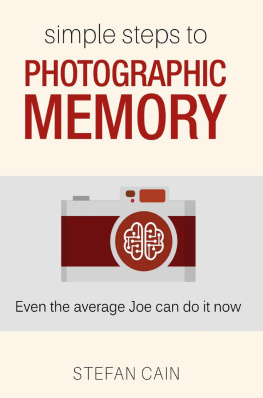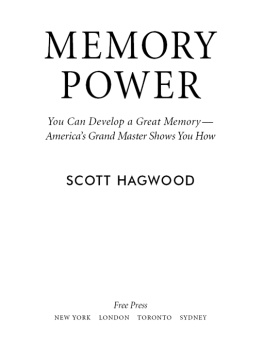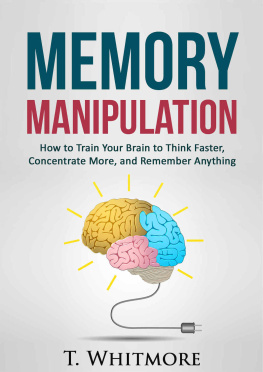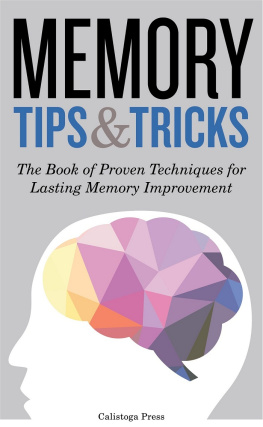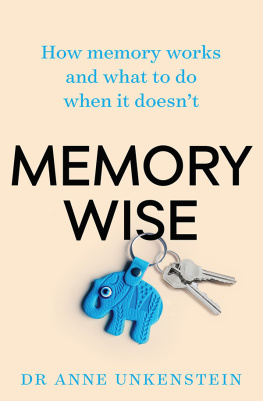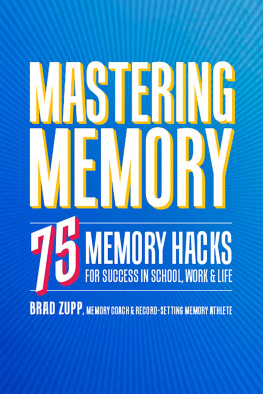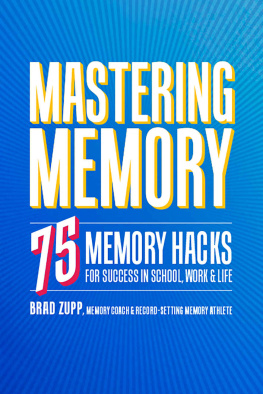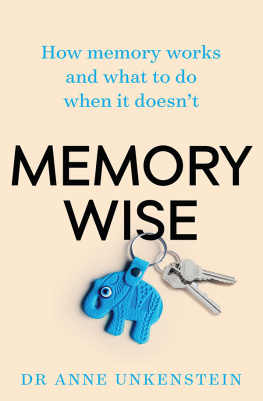Simple Steps to Photographic Memory Even the average Joe can do it now. STEFAN CAIN All rights reserved. No part of this publication may be reproduced, distributed, or transmitted in any form or by any means, including photocopying, recording, or other electronic or mechanical methods, without the prior written permission of the publisher, except in the case of brief quotations embodied in critical reviews and certain other noncommercial uses permitted by copyright law. COPYRIGHT 2017 STEFAN CAIN Although the author and publisher have made every effort to ensure that the information in this book was correct at press time, the author and publisher do not assume and hereby disclaim any liability to any party for any loss, damage, or disruption caused by errors or omissions, whether such errors or omissions result from negligence, accident, or any other cause. DEDICATION Our best shoots are placed in our memory. They are simply there, somewhere .. and they represent our private archive... Nobody can touch .. nobody can see. Massimo Conti This page intentionally left blank. Contents This page intentionally left blank. ___ ENCODING FOR MEMORY STORAGE What is MEMORY? Is it possible to develop a PHOTOGRAPHIC MEMORY? (Or at least come across like you do?) How does memory work? Why does it work so inconsistently? Can you remember what you forgot? You are capable of recalling and retaining more information than you imagine. Your long-term memory is very powerful, though it is all too often taken for granted. After all, hypnotists have been known to retrieve memories from your mind that you have long since forgot. Obviously, that information has been there all along - you simply lacked the proper means of retrieving those memories. Memory has three basic functions: Encoding, Storage, and Retrieval. When you see an infant in the crib, the child is watching, listening, touching and moving, making noises. The babys mind is a blank slate, but he or she is over-alert. Clinical studies have been performed which showed that infants have learned to recognize their own mothers, as opposed to other women. This was proven using brain scans. Babies see, hear, and notice everything! Babies are encoding . During their waking hours, they are constantly absorbing information gleaned via their senses. They will touch the sides of their cribs, squeeze their teddy bears, look at the mobile you have clamped to the crib, listen to the tune, hear the chirping of birds outside and look at them. They are kicking their legs, sucking their thumbs, smelling the supper cooking on the stove, watching and looking everywhere. No wonder babies sleep so much! They are in a condition of information overload and exhaustion! MEMORY ENCODING The term encoding is now often used to mean putting information into that electronic animal known as the computer. It is input in the form of a cryptic code in which only a computer maven could decipher. Computer encoding is composed of natural numbers, capital letters, and punctuations put into sets called a code space consisting of bits, octets, code sets, and patterns like: 2601:1C2:1300:D091:1FA:2FFD:DACE:D98] yaddayaddayadda The human brain also encodes data every day in its own peculiar way. It perceives and automatically accepts some data and blows off the fluff into the winds of nothingness. Your computer stores all of the data the useful data, the ancillary data, the false data, and the useless data. Then it runs out of memory! David Chalmers, a contemporary philosopher, has warned people that computers will become more intelligent than humans, and that day is close at hand. Rest assured that Computer Armageddon, if it does come, is light years away! Your brain has the ability to record useful data. Sadly though, some useful data leaks out and that is why you came here. Consolidation Information that enters the brain is categorized . Individuals make judgments as to the nature of the input, and ready it for the short-term or long-term memory. For example, if you hear a bird chirp, you dismiss it immediately. It is amusing to note that if you were to type is instead of its in a document, your computer will regurgitate the error. In fact, it will still be stored long after it is corrected! That is how the FBI may retrieve deleted information! Learning Styles: How Do You Learn? The means by which information is encoded is through sensory perception. Everyone has their own preferred ways of learning, favoring one or more of the senses to record information. These are called Learning Styles. There is an old adage first uttered by William Mellin in 1957: Garbage ingarbage out. Although its original application was applied to computer science, it is also true of humans. It is the result of the absorption (or encoding) of false data, or falsely recording accurate data. For example, a father takes his three-year old boy to the ice cream vendor. His son orders a hot fudge sundae. He receives a hot fudge sundae with nuts on it, as is customary. His Dad orders a hot fudge ice cream sundae with no nuts. His father gets a hot fudge sundae with chocolate sprinkles on it. (Courteously substituted for the nuts) His little boy looks at the chocolate sprinkles. He remembers that they looked good. The next time, he and his father go to a different ice cream store. The little one orders a hot fudge sundae with no nuts, and he receives a hot fudge sundae with no nuts, but without chocolate sprinkles on it. Then the child complains bitterly and says to his Dad: Where are the no nuts ? (A long father-son discussion follows, leaving the father totally confused!) That very simplistic mishap is the result of improper encoding. Here the little boy learned visually and aurally by associating the visual image of chocolate sprinkles with the sound of the words no nuts. Of course, once the father was able to point out the chocolate sprinkles on his ice cream sundae and say the proper words, the child understood. One of the most popular learning styles is called the VAK/VARK Model and it was developed by William Barbe et al, in 1981, and expanded by Neil Fleming in 1987. VAK/VARK MODEL OF LEARNING STYLES Visual This learning style employs visual aids such as images, maps, charts, graphs, and related graphic devices. A person who tends to form mental images, even from abstract concepts, prefers this style. Aural This style uses hearing and speech to help with information encoding. When a person uses sounds to encode information, he or she may say words aloud or mentally in order to encode the input. Read/Write Textual-based input is the basis for encoding. In this case, the person reads and writes the words on a notepad or a computer device. Kinesthetic This occurs when a person learns through the use of practical examples, or by trial-and-error. It is through tactile means that one learns. Determine Your Learning Style: Introductory Exercise Here is how to determine your learning styles. Read the passage below: Upon the surrender of the Carthaginian Empire, Rome demanded money and that the people leave their beloved city of Carthage, surrender to the legions, and be sold as slaves. Horrified at the prospect, the people of Carthage refused. Upon hearing of this, Cato the Elder leaped from his stone bench in the Senate and bellowed: Carthage must be destroyed! Coveting fame and fortune, young Scipio, the adopted grandson son of the revered Punic War hero, Scipio Africanus, decided to deliver Romes final retaliation. His regiment forged ahead through the searing desert toward Carthage. They brought siege engines, torches, long spears, and finely honed broadswords. Seeing the city gates in front of them, five and forty soldiers thrust the battering ram through the tall wooden doors. The Roman legions roared as they rushed full force into the city. They were met by hordes of bearded Carthaginian with swords and spears held high. Furiously they battled each other mercilessly. |
| 
